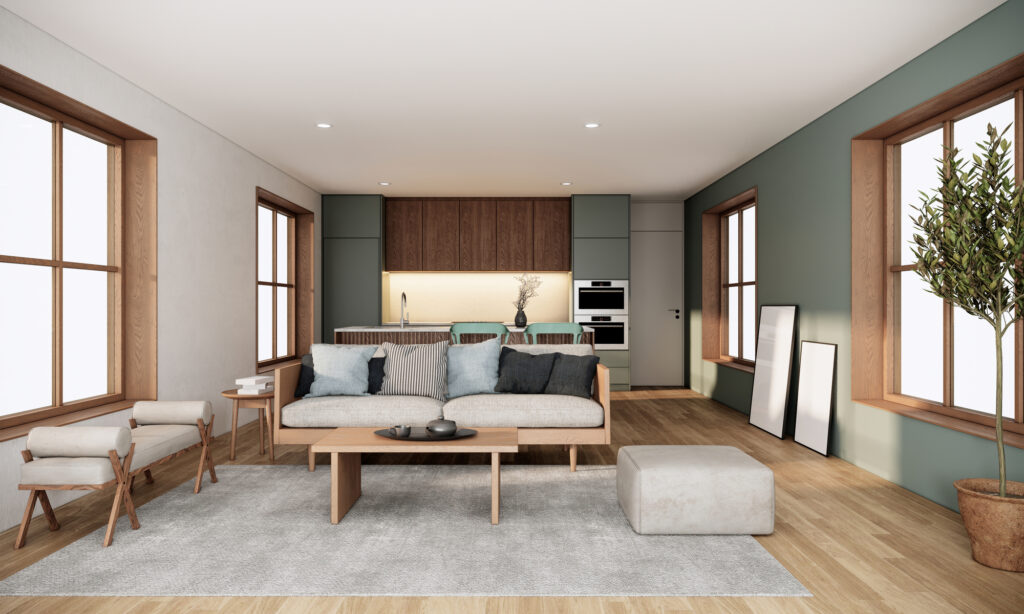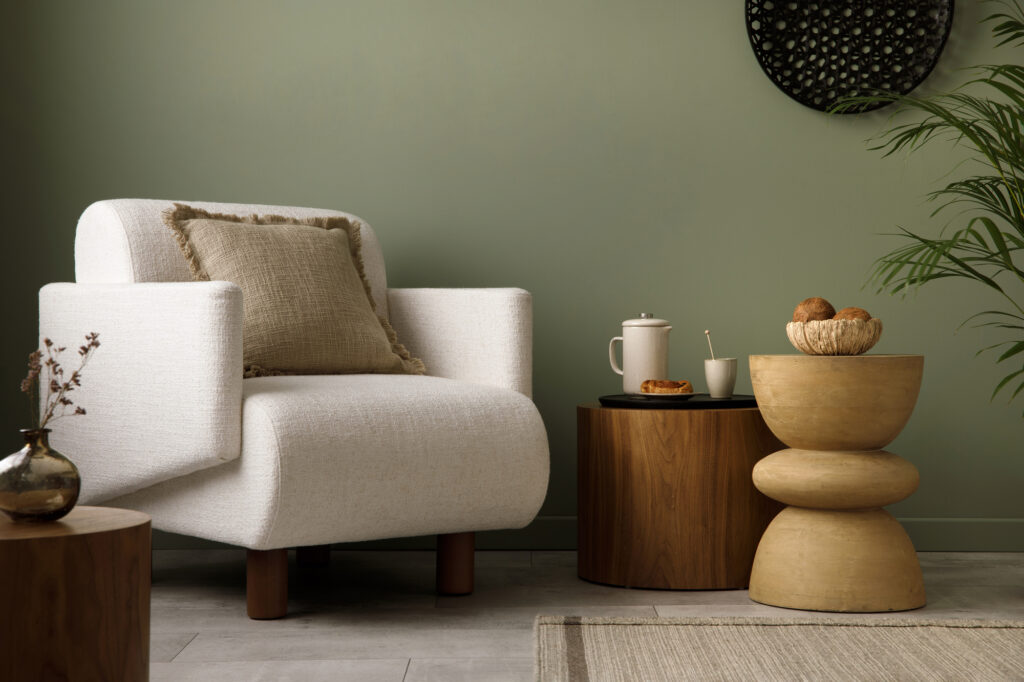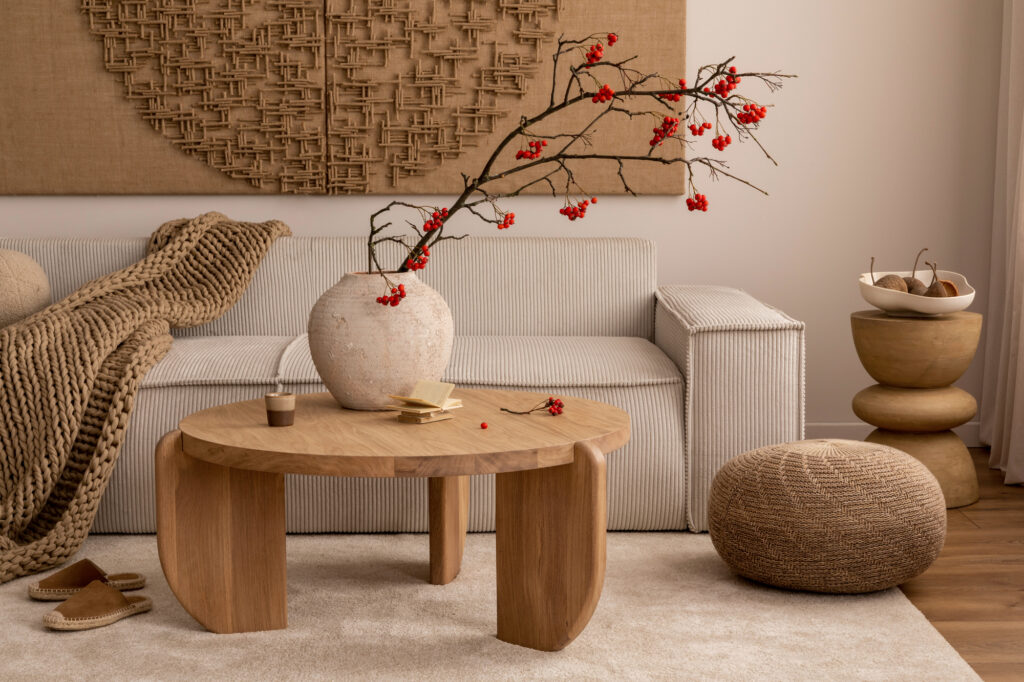In a world that’s constantly bustling with activity, there’s an ever-growing desire among homeowners to create spaces that evoke tranquility, simplicity, and a profound sense of calm. This aspiration has given rise to the popularity of Japandi, a design aesthetic that beautifully fuses Japanese minimalism with Scandinavian functionality. The outcome is a living room environment that doesn’t just look serene and sophisticated but also feels inherently peaceful and organized. Below, we delve into the world of Japandi living rooms, focusing on the soft ambiance they exude, their exemplary use of natural light, and the touch of Zen that infuses calm into every corner.
Contents
The Softness of a Japandi Living Room
One of the most distinctive aspects of a Japandi living room is the softness it adds to the space. This isn’t merely about physical softness, but an overall gentleness in design that appeals to all the senses. Color palettes are typically muted, with shades of gray, soft blues, muted greens, and pale wood tones dominating the scene, all contributing to a soothing visual experience.

The furniture, while maintaining the minimalistic lines characteristic of both Japanese and Scandinavian designs, often boasts natural textures that are pleasing to the touch. Think of a smooth oak coffee table or a plush woolen rug underfoot; these elements add a physical softness that makes the living room inviting.
Moreover, the clutter-free philosophy of the Japandi style contributes to a mental ‘softness’, a lack of chaos that allows residents and guests to feel at ease, reducing cognitive overload and promoting relaxation.
Natural Light in Japandi Design: Illuminating Spaces
Japandi living rooms thrive on the principle of naturalness, and nothing speaks of this principle more profoundly than the use of natural light. The design’s simplicity and the absence of unnecessary adornments allow for an unobstructed flow of light, illuminating the space in the gentlest way possible.

Large windows, often undressed or adorned with sheer, light-permitting curtains, are a staple in Japandi interiors. They serve not just as sources of daylight but also as frames for the outdoor scenery, blurring the lines between inside and out. This integration of nature into the living space can have a profound effect, making the room feel more spacious, airy, and tranquil.
Furthermore, the strategic placement of mirrors or reflective surfaces can enhance the brightness of the room, making it feel more open and comfortable. The quality of natural light, as it changes throughout the day, also adds dynamism to the space, subtly shifting the room’s mood from the energizing brightness of the morning to the soft, soothing hues of the evening.
Touch of Zen: Infusing Calmness into the Environment
Incorporating a touch of Zen is at the heart of Japandi design, deeply rooted in the Japanese influence of creating spaces that nurture peace and meditation. This is achieved through several design choices.

Firstly, the integration of natural elements – such as indoor plants, rocks, or water features – into the living room is not just an aesthetic move; it’s a nod to the Japanese practice of Zen. These elements bring a piece of the serene outside world into the home, promoting a sense of peace and grounding for the inhabitants.
The principles of Zen also emphasize mindfulness, reflected in the intentional use of every piece of furniture and decor. Nothing is superfluous in a Japandi living room; everything has its place and purpose. This deliberate minimalism helps reduce the noise in our environment, creating a space conducive to relaxation and reflection.
Furthermore, the concept of ‘ma’—the Japanese term for negative space or emptiness—is crucial in Japandi design. By not overcrowding the living room and appreciating the empty spaces, one creates an environment where the mind can rest, ultimately fostering a calmer and more focused mindset.
Japandi Living Room Ideas Conclusion
Japandi living rooms offer more than just a visually pleasing area; they create a holistic experience that caters to tranquility, clarity, and a deep-rooted connection with the natural world. By embracing the softness, allowing natural light to be the protagonist, and infusing a touch of Zen into the living space, homeowners can cultivate a sanctuary where comfort meets simplicity, and tranquility overrides chaos. In a hectic world, a Japandi living room becomes not just a trend, but a soothing retreat, a gentle reminder of the beauty in stillness and the clarity in simplicity.
Image Credit: Deposit Photos







